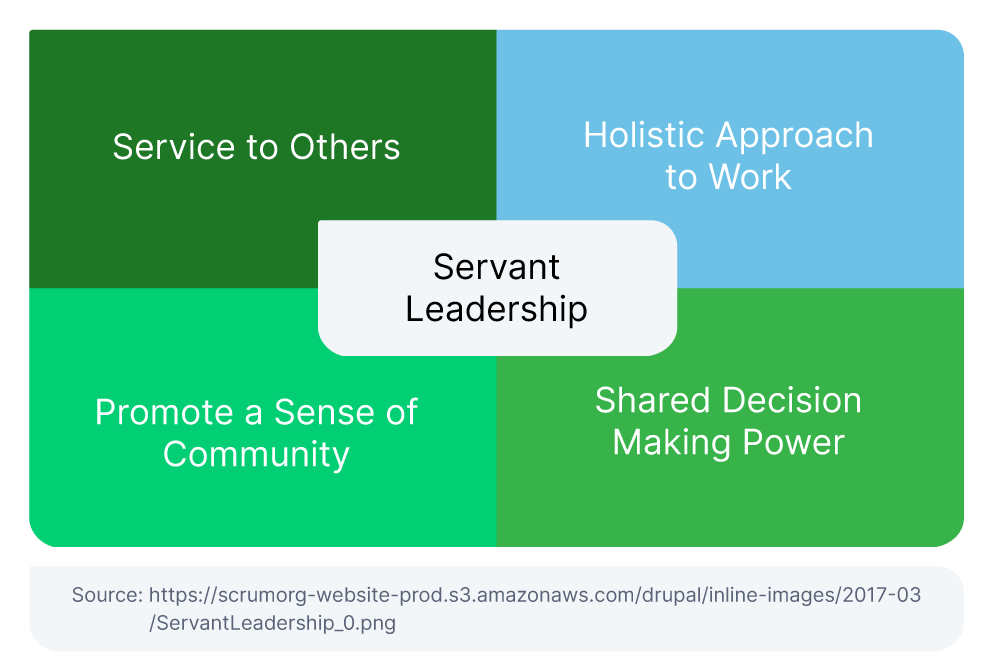Scrum Master vs. Project Manager: Top 5 Differences

Scrum is a method of organizing and running agile teams to confront, iterate upon, and solve design or development challenges. The name comes from rugby; in rugby the scrum (or scrummage) occurs when the ball goes out of play and the players pack close together -- heads down -- to try to gain possession of it again. This is meant to resemble the style of collaborative work of the scrum framework in tech.

According to Digital.ai: “Scrum is a project management methodology designed for work where change or unpredictability is expected.” That’s why it tends to be popular with software development and the creation of technology -- the design process needs to align with the fast-moving and quickly developing nature of the product being designed.
What characterized scrum is short daily meetings (usually called daily “standups”) and short-term quick cycles of generative work called “sprints.” Springs often last between one and three weeks, and keep projects on track without overstressing them with an all-or-nothing approach. Scrum is a type of Agile methodology -- according to Coursera, “66 percent of Agile adopters using Scrum.”
The scrum master is the leader of the scrum. His or her job is to facilitate the scrum frameworks and agile management techniques, to ensure they are followed successfully, and when they aren’t, to shift them in all necessary ways in order to get the work done to a satisfactory level.
The scrum master is often confused with a project manager -- and his or her work is not entirely different. But there are a few key differences that are important to keep in mind.
What does a scrum master do?
According to Coursera, a scrum master leads the scrum, but as a fully-fledged member. They’re like the quarterback of the scrum, rather than the coach. So while they mentor and guide the scrum, they also do the work alongside the other scrum teammates. Along with the product owner and development team, the scrum master has to get their hands dirty running meetings, facilitating daily stand-ups, planning the team springs, and leading stop-gap measures to check on progress and ensure it’s on track.
In addition, they need to help clear space and capacity for teammates so they can do their best work, and ensure that communication between teammates and with the company at large is fluid and clear. Coursera summarizes this as the role of a servant leader, “because of the strong supportive role that they play.” They are the team supporter, cheerleader, and quarterback, planning plays and making sure they come alive.

What does a project manager do?
Unlike a scrum master, who oversees a set framework -- the scrum -- a project manager is a general term which applies to a range of professionals who make projects happen. These roles can be on a large scale or a small scale, for product design or for development, for marketing, for recruitment, or even for roles completely outside of tech.
In short, a project manager takes control of a project in a way which handles workflow, distribution of tasks, deadlines, deliverables, timing, budget, and objectives. Often, a project manager leads meetings, sets schedules, handles assignments and apps like Asana or Trello, sets and ensures budget compliance, and serves as a liaison between the team and the management. Depending on the type of work, they might also be a risk assessor and a risk-plan creator. And if something goes wrong, they are often at the front lines trying to solve it.
How are a scrum master and a project manager different?
While much of what a scrum master and a project manager do are similar, they are fundamentally different roles. Here is a breakdown of five of the main ways the roles diverge:
1. Different Context
While both the project manager and the scrum master and leaders of teams, they serve in different contexts. The project manager can run any type of project, while the scrum master is a specific role built to ensure the successful operation of a scrum. The skill sets may be transferable, but the context is different.
2. Different Application
A scrum master’s job is to make sure his team is successful; they ensure that his or her team is equipped to do agile work, and is on track to complete the sprints they are assigned to do. In other words, the bottom line is the team. A project manager, however, ensures that the project is successful — and this can include top line things such as budget and staffing, timeline, and other administrative issues. As such, while they both ensure success by keeping things rolling along, they apply this orientation in very different ways.
3. Different Structure
A scrum is a specific methodology, a framework with concrete structure, and it can’t be deviated from too greatly -- or else it is no longer a scrum. So the role of scrum master will always work in this way, alongside the other roles of the scum, and with agile frameworks. A project manager, however, is a role that fits into a wide range of corporate structures and can be adapted to a range of projects, whether they are agile or not.
4. Different Training
A scrum master receives training on software development and specific technical skills. Ultimately, their work is very close to the other agile workers developing the product. A project manager, however, can receive training that is agnostic of work orientation, and rather deals with general skills relating to organization and business processes. As such, neither would be able to replace the other without additional training.
5. Different Pay
Last but not least, project managers and scrum masters earn different amounts of money -- perhaps relating to the different levels of technical skills required for their work. The following salary averages come from Glassdoor March 2022. Scum masters: $99,492; Project manager $107,908.
Are you interested in being a scrum master or a project manager? Or bringing one onto your team? Reach out to Jobsity today; we can help you understand what staffing arrangement might be best for your team.
--
If you want to stay up to date with all the new content we publish on our blog, share your email and hit the subscribe button.
Also, feel free to browse through the other sections of the blog where you can find many other amazing articles on: Programming, IT, Outsourcing, and even Management.

With over +16 years of experience in the technology and software industry and +12 of those years at Jobsity, Santi has performed a variety of roles including UX/UI web designer, senior front-end developer, technical project manager, and account manager. Wearing all of these hats has provided him with a wide range of expertise and the ability to manage teams, create solutions, and understand industry needs. At present, he runs the Operations Department at Jobsity, creating a high-level strategy for the company's success and leading a team of more than 400 professionals in their work on major projects.